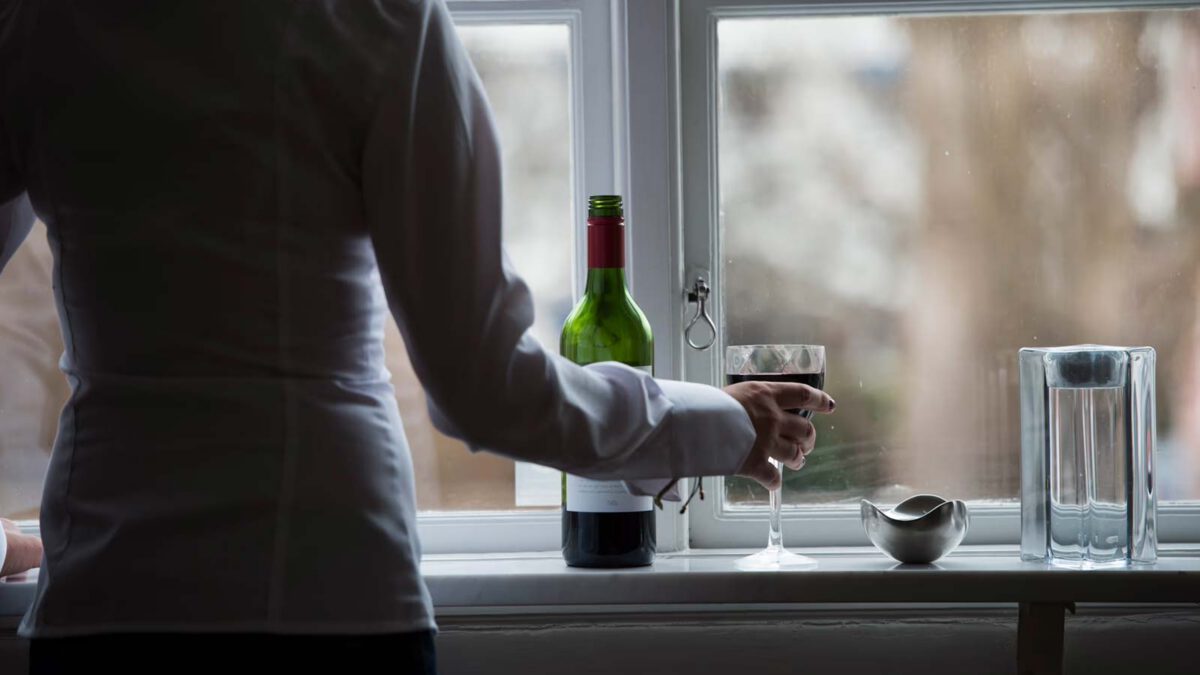Jessica Lind monitors her clients seven days a week, around the clock, and quickly detects any deviating behavioral patterns: As a client, you must take a breathalyzer test at specific times each day, typically three times, and simultaneously take a selfie to verify that the right person is using the test.
“It cannot be manipulated,” states Jessica Lind.
“The results are sent immediately for analysis, and I have the answer within ten seconds.”
Care and contact are maintained through a smartphone provided by the clinic, consisting of daily text messages and FaceTime calls, as well as in-person meetings for those who want them as a complement. Clients also receive tasks, such as taking walks and answering daily questions about their well-being.
“It becomes a more honest treatment than the traditional approach. You can’t hide if you’ve been drinking alcohol. If someone chooses not to take the test, I ask why. What happens in the app becomes a tool for the next meeting.”
Not to punish but to analyze what happened and try to prevent it from happening again.
The clients’ treatment goals vary:
“Some need total abstinence, at least in the initial phase. Others choose to drink more normally – if they can.”
Not everyone can drink
What constitutes normal or safe drinking cannot be definitively answered, which is particularly difficult to relate to, especially for those who are dependent, notes Jessica Lind.
“We’re all different. Some can drink alcohol, others cannot. Some can manage just one glass of wine or beer occasionally, while others say that even a small amount triggers an alcohol craving and suddenly a relapse is underway. This applies to all behavior-altering substances and gambling as well.”
Treatment begins with a three-month period to understand its purpose and establish new routines.
“After that, most want to continue. Some for another six months, others stay for a couple of years. The goal is for clients to maintain sobriety for longer periods, preferably for life. Learning new habits increases the chances of success.”
The method suits many but not everyone, according to Jessica Lind. It requires strong personal motivation and genuine insight into one’s problem.
“You need to be receptive to treatment and realize that you’ll have to do a lot of work on your own, which in turn requires strong will and drive.”
Jessica Lind has both women and men as clients. She believes there are many unreported cases among women.
“Women typically experience greater shame related to their addiction. They hide at home and drink secretly alone to avoid showing how much they drink, making them harder to reach. The responsibility of being a good parent is more associated with women, and if she drinks too much alcohol or takes other drugs, her entire facade crumbles.”
Numbing anxiety
So why does one fall into the grip of addiction? One theory suggests having experienced trauma?
“Yes, I would definitely agree with that. We haven’t had a single happy addict in our treatment program, only people who numb anxiety, loneliness, or dark feelings with substances.”
Jessica Lind believes addiction care would benefit from collaboration between healthcare and social services.
“We often share the same clients. For example, people self-medicating with alcohol or other drugs for mental health issues, neuropsychiatric diagnoses, or trauma. As it is now, we often treat the addiction first, then comes the diagnosis.”
“If it were the other way around, the patient/client might not end up in deep addiction. Suffering could be reduced.”
Those interested in digital addiction care can contact an addiction clinic in their area or their primary care center, advises Jessica Lind.
“Here in Mjölby where I work, the treatment is available through the municipality’s outpatient care and is free of charge.”
- Prioritizing alcohol
- Poor sleep
- Loneliness
- Deteriorating finances
- Self-isolation
- Memory gaps
- Problem denial
- Increasing sick leave
- Increased alcohol cravings
Also read Ica Kuriren’s article about Jessica Lind, treatment secretary, and her work with Previct.



